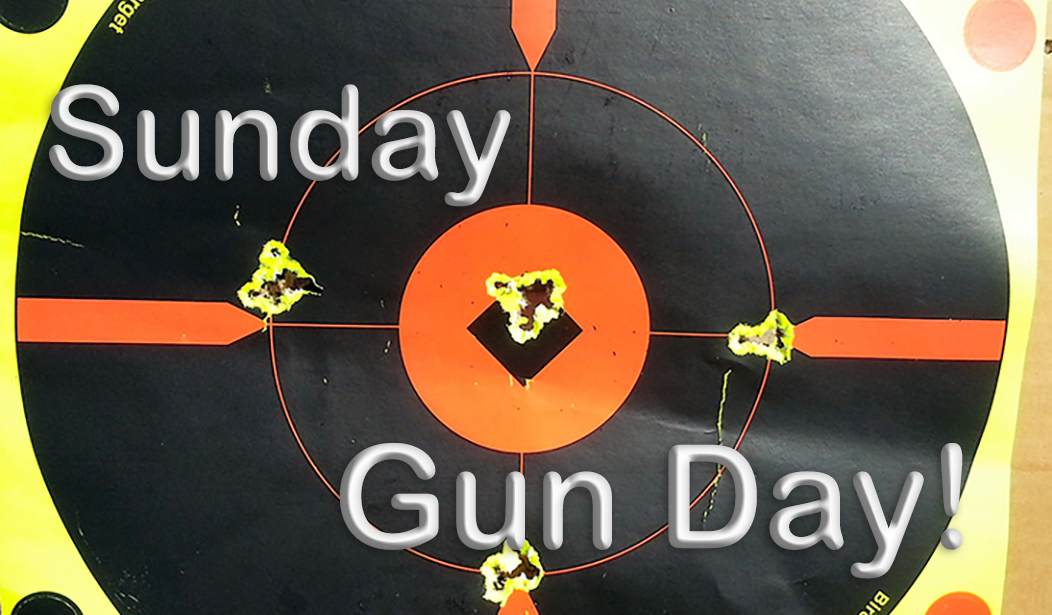If Some Bullets Are Good, then More are Better
Above is a truism in military circles. No battle was ever lost because the losers had too much ammo, and when you’re in a fight, you don’t get a bonus for bringing any ammo back.
Or, as Murphy’s Laws of Combat puts it, “When in doubt, empty your magazine.”
The machine gun is one of the biggest developments in the late 19th-early 20th century military arts. Thanks to the inventiveness of people like Hiram Maxim and John Moses Browning, accuracy by volume became a primary principle.
So what could possibly be better than a machine gun? A bigger machine gun, and John Browning brought us that, as well, with a piece that gave rise to the magnificent M2 .50 caliber machine gun, which has seen combat use with American and allied forces from before World War 2 to date.
See Also: Sunday Gun Day XLII - The M2 Browning, The World's Greatest Heavy Machine Gun
And what could possibly be better than a bigger machine gun? Four bigger machine guns. Which brings us to something truly magnificent: The M45 Quad Mount, better known as the Quad Fifty. You’ve gotta love something the guys fighting in Europe called, among other things, the “Kraut chopper.”
The Guns
The machine guns, of course, were the immortal M2 Browning .50 caliber guns mentioned above. Rather than duplicate effort, I’ll quote my earlier Sunday Gun Day dedicated to the M2 (see link above):
So they turned to the Maestro, and as usual, John Browning delivered. He took the .30-06 case, already proven as a machine-gun round, and upsized it; thus was born the famous .50 BMG – Browning Machine Gun. Browning and engineer Fred T. Moore designed the first heavy machine gun, which was, essentially, an upsized and modified version of the M1919 Browning .30 caliber machine gun: The water-cooled M1921 Browning machine gun.
But the heavy water-jacketed version wasn’t amenable to placement in aircraft. The Army experimented with the M1921, but development was stymied when John Browning suddenly passed away in 1926. A designer named S.H. Green looked at the M1921 and considered how to adapt the piece for a variety of uses, modifying the receiver to accommodate different barrels and allowing for feeding from either side of the receiver, making installation in aircraft wings possible.
The result was the M2, known widely in the U.S. military as Ma Deuce. Production started immediately, with Colt and FN Herstal making the first production guns. General Dynamics, U.S. Ordnance, and Ohio Ordnance have also built the Ma Deuce.
Firing just one .50 caliber is an experience; if you ever wondered what it was like to be the Norse god Thor, God of Thunder, firing an M2 will give you a pretty good idea. And if one is fun, you know four is going to be eight times as fun (It’s a logarithmic progression.) Assuming, of course, that you’re pitching and not catching.
The Mount
But, you might ask, how do you mount four .50 caliber bullet-launchers on one platform, to fire on one target? The answer: The M45 Quad Mount.
But it began with a dual mount. Early in World War 2, the U.S. Army was looking for a mobile anti-aircraft platform, and they found that one Browning M2, awesome as it was, didn’t have a high enough rate of fire to effectively engage fast-moving, low-flying attack aircraft. The first answer to this was the M13 Multiple Gun Motor Carriage (MGMC) that had two M2s mounted in a rotating mount in the back of the standard Army M3 half-track. The M13 saw business once, during the landing at Anzio in January 1944. It did well enough as an anti-aircraft and ground support weapon, having served in good order with the 5th U.S. Army in that campaign. But remember what I said about more bullets being better?
Even as the M13 MGMC was still ongoing, there were already efforts underway to double the pleasure, double the fun, with four Browning .50 calibers. The result of this was the M45 Quad Mount, which became the principal weapon of mobile anti-aircraft units in World War 2. Electrically aimed and electrically fired, the M45 mount allowed firing two guns at a time or all four at once. It could be tuned on the fly to have the slugs from all four guns converge on a single point. And, at places like Bastogne during the famous Battle of the Bulge, the troops learned it made a very effective anti-vehicle and, just generally, a great ground-target weapon. German troops tended to become maladjusted when placed in the crosshairs of an M45 Quad Mount spitting out around 2,000 rounds per minute – but they didn’t stay maladjusted long, as they usually ended up quickly and messily dead.
In the Pacific, the M45 was deployed on aircraft carriers for extra protection against kamikazes, but in that role, they were less effective due to the high speeds and high attack angles of the Japanese suicide planes.In The End
After the Great War, Part 2 ended, the M45 and its quad fifties found a reduced role in the American armed forces. The mount wasn’t up to engaging the new jet-propelled attack planes of the post-WW2 era, although it still excelled at ground-attack roles; the French Army used them in Indochina as we did in Korea to change the bad guys’ pronouns to “over here” and “over there.” Our guys used them later in Vietnam, as French Indochina was renamed. Our new generation of grunts found out, just as their fathers had, that the Quad Fifty made the North Vietnamese Army and the Viet Cong just as maladjusted as it had the Germans a generation earlier. Then it made them assume ambient temperature just as well as it did those Germans.
But the ultimate development was, unsurprisingly, from Israel, where they replaced the M2 Brownings on the M45 mount with two 20mm Hispano-Suiza cannons. Now that’s a chopper. Because bigger and more explosive works, too.
See Also: Sunday Gun Day Vol. II Ep. III - the Mk 19, a Machine Gun That Shoots Grenades
You can’t go much better to win the love of grunts than to give them a better, faster way to send lots of thumb-sized .50 caliber attitude adjustment downrange, or up at low-flying bad-guy aircraft. The Quad Fifty did all that, and it did it up through the Vietnam era. And in today’s world of high-tech weaponry, with night vision, optical this and AI that, we older guys have to wonder, sometimes, if there can be any substitute for lots and lots of big, heavy, fast-moving .50 caliber bullets.
Because we’re Americans, and accuracy by volume is how we do it.















